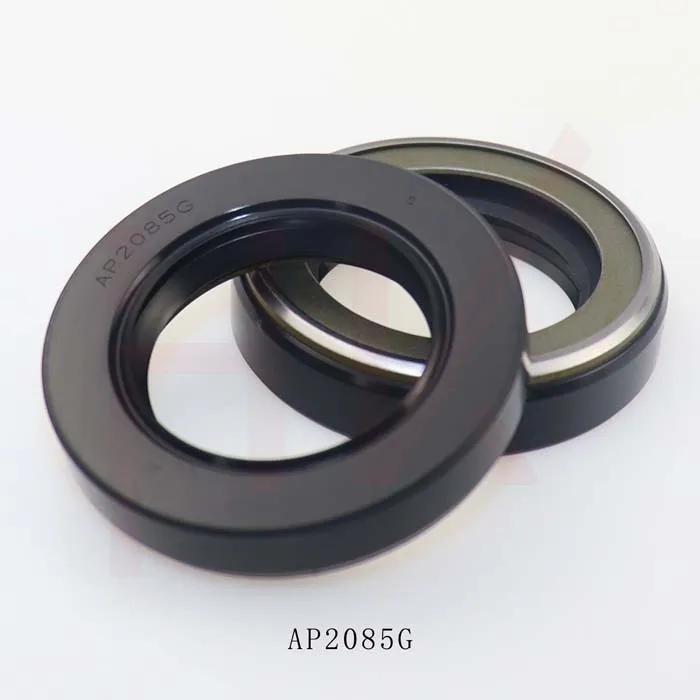Nov . 25, 2024 00:32 Back to list
high pressure rotary shaft seals
High Pressure Rotary Shaft Seals Essential Components for Mechanical Integrity
In the realm of mechanical engineering, the importance of sealing technologies cannot be overstated. Among these, high pressure rotary shaft seals play a pivotal role in ensuring the reliability and efficiency of rotating machinery. These seals are designed to withstand extreme pressures and harsh operating conditions, making them vital components in various industrial applications, ranging from hydraulic systems to automotive engines and aerospace machinery.
Understanding Rotary Shaft Seals
Rotary shaft seals, often called oil seals or lip seals, are devices that prevent the leakage of lubricants and contaminants between rotating shafts and stationary components. They consist of a flexible elastomeric lip that bears against the shaft surface, creating a tight seal. This design helps retain oil or grease in the assembly while preventing external contaminants such as dirt and moisture from entering.
High pressure rotary shaft seals are specifically engineered to withstand significant pressures, sometimes exceeding 5,000 PSI or more. The design considerations for these seals are complex, as they must manage not only the pressure but also temperature variations and the chemical compatibility of the materials used.
Design and Materials
The effectiveness of a high pressure rotary shaft seal is largely dependent on its design and the materials employed. Common materials for these seals include nitrile rubber, fluorocarbon elastomers (like Viton), silicone, and polyurethane. Each of these materials offers distinct advantages based on the operating conditions—such as temperature extremes, chemical exposure, and wear resistance.
The design of a high pressure seal typically involves a lip that is engineered to have a specific contact angle with the shaft, ensuring optimal sealing performance
. Additionally, features like anti-extrusion rings and dust lips can be incorporated to enhance durability and manage external debris.Applications
high pressure rotary shaft seals

High pressure rotary shaft seals find applications across various industries. In hydraulic systems, for example, these seals are critical for maintaining system pressure and preventing hydraulic fluid leakage, which can lead to system inefficiencies and safety hazards. In automotive applications, they are used in transmissions and engine components to ensure longevity and performance.
In the aerospace industry, high pressure rotary shaft seals are vital for the integrity of engines and other rotating equipment exposed to extreme conditions. Their reliability ensures that sensitive components remain free from contamination, thereby enhancing safety and performance.
Performance Challenges
Despite their robustness, high pressure rotary shaft seals face several challenges in real-world applications. One of the primary concerns is wear over time due to friction between the seal and the shaft. This wear can lead to premature seal failure, resulting in leaks that can compromise the integrity of the system.
Another challenge is the potential for thermal expansion, which can affect the fit and sealing capabilities of the seal. High temperatures can also cause the elastomeric materials to degrade, leading to a loss of sealing effectiveness. Engineers must therefore carefully consider operational parameters when selecting and designing rotary shaft seals to mitigate these issues.
Maintenance and Selection
Choosing the right high pressure rotary shaft seal involves evaluating several factors, including operating pressure, temperature range, and the presence of specific oils or chemicals. Regular maintenance and inspection can extend the life of these seals, preventing costly downtime and repairs. Typically, manufacturers recommend routine checks to ensure seals are functioning adequately and to identify any early signs of wear.
In summary, high pressure rotary shaft seals are crucial components in the machinery that drives modern industry. Their ability to maintain mechanical integrity under challenging conditions makes them indispensable in many applications. As technology advances and machines operate under increasingly demanding environments, the design and materials of these seals will continue to evolve, ensuring that they meet the rigorous standards required for safety and efficiency. By prioritizing the selection and maintenance of these seals, engineers can significantly enhance the performance and lifespan of their equipment.
-
TCN Oil Seal Metal Ring Reinforcement for Heavy Machinery
NewsJul.25,2025
-
Rotary Lip Seal Spring-Loaded Design for High-Speed Applications
NewsJul.25,2025
-
Hydraulic Cylinder Seals Polyurethane Material for High-Impact Jobs
NewsJul.25,2025
-
High Pressure Oil Seal Polyurethane Coating Wear Resistance
NewsJul.25,2025
-
Dust Proof Seal Double Lip Design for Construction Equipment
NewsJul.25,2025
-
Hub Seal Polyurethane Wear Resistance in Agricultural Vehicles
NewsJul.25,2025
-
The Trans-formative Journey of Wheel Hub Oil Seals
NewsJun.06,2025
Products categories
















